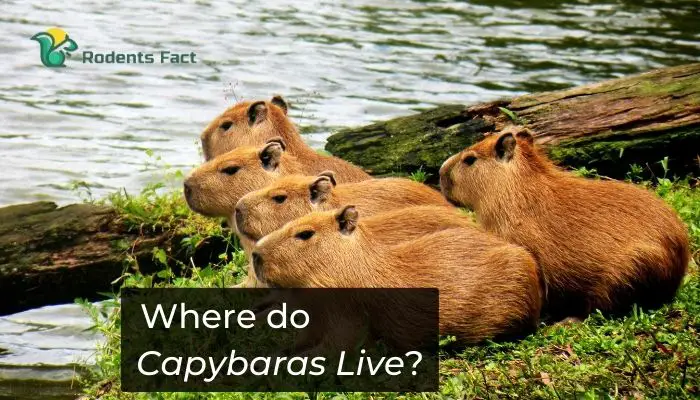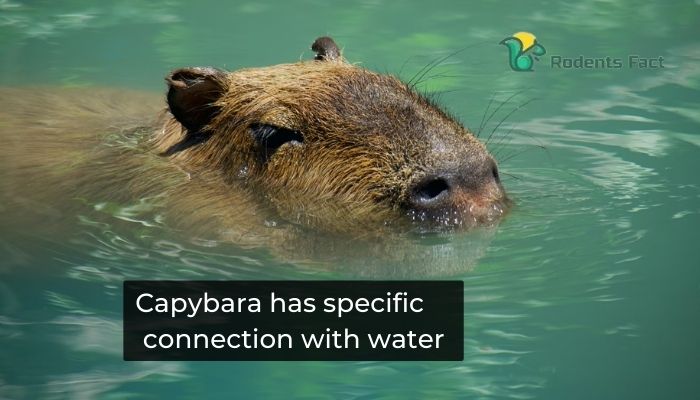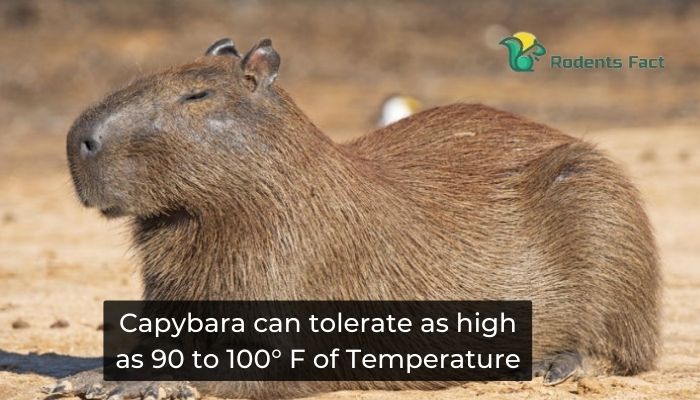Where does a Capybaras Live?
Now and then, you might see the largest rodent, Capybara, swimming in the water in Argentina. Well, they are mostly seen in semi-aquatic regions like this. But it also makes us think if they are land animals or aquatic animals.
As we have mentioned, they are semi-aquatic; they are land animals but for them, water is a must! But that doesn’t tell us where they live! Where does a Capybara live and why?

Here, we have listed the geographic location of the capybara along with the temperature and environment that this rodent prefers. Let’s take a look at their habitat and the habits formed for their locality.
🐿️ Read More: How long do Capybaras Live?
The Geography
Capybaras are the habitat of South America. However, the range of these rodents is large. From South Africa, this largest rodent has a habitat to the east of the Andes. They live in Colombia and Venezuela and from this part; they live southwards to Northern Argentina too!
They prefer the lowlands, no doubt. If we need to make a list of the geographical location of where the capybaras live, you can simply start from Panama, Colombia, Guyana, and Venezuela. They also cover Brazil, Paraguay, and Peru.
Along with this, they live in Uruguay, Northeast, and Argentina too. As we can see, they have a vast reign. So, where are capybaras in the US? Is there a capybara in Florida? Well, there is a small population of capybaras found in north-central Florida in the US.

Some of them are seen in Cape Coral too. So, yes, there are capybaras in Florida. They live in the forested riverbanks, wetlands the mangrove swamps in Florida. As these massive rodents try to stay in the topical forest areas along the lakes, rivers, and marshes, Florida is on their hit list too.
There are almost 50 or more capybaras in this area. In Florida, Orlando is one of the most popular for having capybaras. These semi-aquatic mammals are common in South America but you won’t get to see them in Chile.
One species of Capybara is seen on the Central Coast of California too. You might ask why there are no Capybaras in Chile. Well, the Andes Mountain there prevents these animals. They could not make it over the mountain along the western coast. As a result, capybaras are not seen in Chile.
The Environment
As we have already mentioned the geographical locations they live in, you can already understand that they have a specific connection with the water! Yes, capybaras always love the semi-aquatic locations for living.

Along with this, they try to spend almost the whole day in dense vegetation. But well, once again, the vegetation must be near water! From the river to lakes to ponds, they love almost everything that contains water!
They also have a fondness for marshes and swamps. For this likeliness towards the water, they tend to select the lowlands above all! The lowlands that have close proximity to the water are their favorite.
These large rodents try to stay near the rainforest lakes and rivers. Their preference is the brackish wetlands. Along with this, when the season changes, they love the flooded grasslands too! They have specific affection towards savannas too.
In short, wherever standing water is available in the aforementioned geographic locations, you can see one or more capybara there! You know about their location already. Check out “what does a capybara eat” to know more about their diet!
Water Fondness of Capybaras
Often, people get confused about their liking of the water. To explain this, we need to talk about the skin of the capybara. They have dry skin. And to keep their skin healthy, they try to stay around water.
By doing this, they can swim and keep their skin away from being dry. Throughout the process, the capybaras have incorporated it into their daily lifestyle. And now, we can’t think of capybara without a water source around them!
Along with swimming in the water, they think water to be their source of life! This is because they eat water plants for their survival. Also, grasses are their favorite food. Not only for feeding their hungry self, but they also use water when it comes to escaping!
Yes, as they can swim, they use water as a way to survive. When there is a predator around them, they try to escape from it by using their way through the water.
To survive from the predators, they use water as their shield. An amazing fact is they can stay underwater more than any other rodent can! Yes, once they go underwater to survive a predator, they can stay for almost five minutes.
🐿️ Read More: Why do Capybaras Like to Live near Water?
By staying hidden, they trick their hunters. They are quite common to the hippo, you know! From the ears and eyes to the nostrils- all of them are near the top of their head.
As a result, when there is a hunter following them, they can go underwater and when they need to check up on the predator, all they need is to lift these parts a bit out of the water. The rest of their body stays underwater tricking the predator about its presence. What a cool way to safeguard their lives, isn’t it?
As they have dry skin, their skin itches. So, they try to stay as cool as possible by swimming and bathing. To stay cool, they also reel in the shallow water and mud. After all, it’s all about keeping the skin comfortable and cool.
Facts about Capybaras:
We can easily say that capybaras love large grassy areas. Along with this, they require varying topography for roaming and grazing. As they need shelter, they need privacy and for this, water is an unforgiving part of their lives.
The Temperature
These rodents can withstand temperature extremes! And so, you can keep them outdoors in the areas where the temperature is as low as 40 degrees Fahrenheit. However, for this, they will require heated shelter and proper bedding.

The highest temperature these animals can tolerate is 90 degrees Fahrenheit to 100 degrees Fahrenheit. In this case, the area must have proper access to water. They can tolerate cold but accessibility to water is a must for their survival.
However, they don’t like to know must. Instead of being too cold, they will prefer the heat. Though they can withstand extreme cold, they can cause illness. Depending on the location, the lifespan of a Capybara changes too. How long do capybaras live– know about it more!
How did Capybaras go to Japan?
By now, you probably can answer ‘where are capybaras from’! But how did they go to Japan? According to our summary, these rodents are from South America and the areas close to it. Japan is in Northeast Asia. How did they go there?
They are in Japan for more than 50 years now. Capybaras were taken there as zoo animals back in 1960. As they are social and can be tamed easily, they were taken. No, they are not native to Japan.
Also, you should keep in mind this Japan is surrounded by the Pacific Ocean along with the Sea of Japan. Also, there is the Sea of Okhotsk and the East China Sea too. As there is a required water body, capybaras can live there too!
Wrap Up
Capybaras, as you can see, is not only the largest rodent but also the friendliest. But when it comes to the location it is staying, there are some specifics.
The geographical location where they are born is the best suited for them. Though too much heat or cold goes with them, they must be kept in neutral weather and location where there is enough water to bathe and swim!





